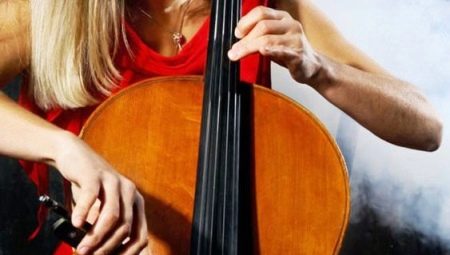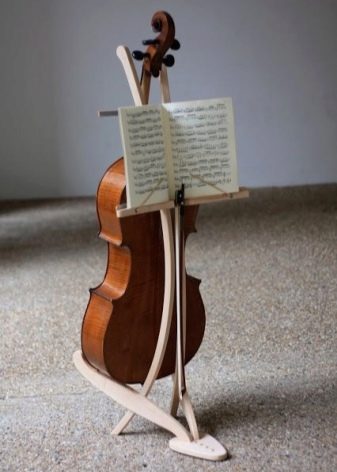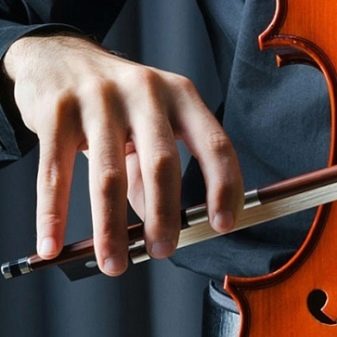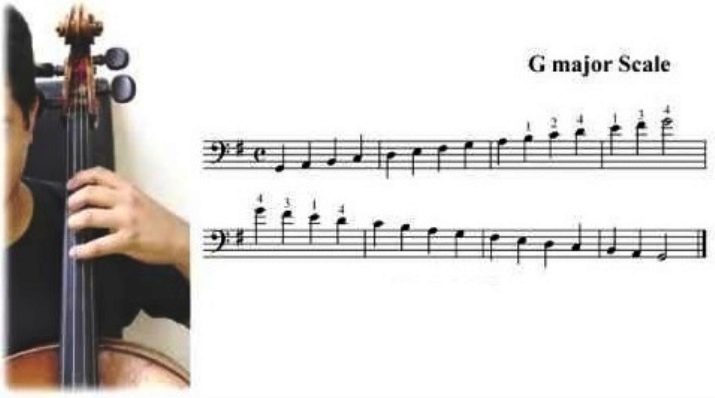Learning to play the cello

The cello belongs to the stringed bowed musical instruments of the violin family, therefore the basic principles of playing and the technically possible techniques of these instruments are similar, with the exception of some nuances. We will find out if it is difficult to learn to play the cello from scratch, what are the main difficulties and how to overcome them for a novice cellist.
Preparation
The first lessons of the future cellist are no different from the initial lessons of other musicians: the teacher prepares the beginner to play the instrument directly. Since the cello is a fairly large musical instrument, about 1.2 m in length and about 0.5 m in the widest - lower - part of the body, you need to play while sitting. Therefore, in the first lessons, the student is taught the correct fit with the tool.



In addition, at the same lessons, the choice of the size of the cello for the student is made.
The choice of the instrument is based on the age and characteristics of the general physical development of the young musician, as well as on some of his anatomical data (height, length of hands and fingers).
To summarize, in the first lessons the student learns:
- cello construction;
- what and how to sit with the instrument when playing;
- how to hold the cello correctly.
In addition, he begins to study musical notation, the basics of rhythm and meter.


There are also a couple of lessons devoted to teaching left and right hand positioning. The left hand must learn to properly grasp the neck of the bar and move up and down the bar. The right hand will have to practice holding the bow reed. True, this is not an easy task even for adults, not to mention children. It's also good that for children the bow is not as huge as for adult musicians (1/4 or 1/2).


But even in these lessons, the study of musical notation continues. The student already knows the C major scale and the names of the cello strings, starting with the thickest: C and G of the large octave, D and A of the small octave.
Having mastered the first lessons, you can move on to practice - start learning to play the instrument.
How do you learn to play?
In terms of technique, playing the cello, due to its large size, is more difficult than playing the violin. In addition, due to the large body and bow, some of the technical touches available to the violinist are limited here. But still the technique of playing the cello is distinguished by grace and brilliance, which sometimes one has to go to during several years of regular practice.
And no one is forbidden to learn to play for home music making - playing the cello gives the player real pleasure, since each string on it has only its own unique sound. The cello is played not only in orchestras, but also solo: at home, at a party, at holidays.

The first exercises with scales may not be pleasant: from habit the bow slips off the strings, the sounds are clumsy (at times just awful) and discordant, hands dry up, shoulders ache. But with the experience gained by conscientious studies, the feeling of fatigue of the limbs disappears, the sounds are evened out, the bow is firmly held in the hand. Already other feelings appear - confidence and calmness, as well as satisfaction from the result of their work.
The left hand, when playing scales, masters positions on the instrument's neck. First, the one-octave scale in C major is studied in the first position, then it is expanded to a two-octave scale.

In parallel with it, you can begin to learn the A minor scale in the same order: one octave, then two octave.
To make it more interesting to study, it would be nice to learn not only scales, but also beautiful simple melodies from classical works, folk and even modern music.
Possible difficulties
The cello is called the perfect musical instrument by many professionals:
- the cellist takes a comfortable position for a full and long playing;
- the instrument is also located advantageously: it is convenient in terms of access to the strings with both the left and right hand;
- both hands during the game occupy a natural position (there are no prerequisites for their fatigue, flowing, loss of sensitivity, and so on);
- good visibility of the strings on the fretboard and in the bow area;
- no full physical exertion for the cellist;
- one hundred percent opportunity to reveal a virtuoso in oneself.

The main difficulties for learning the cello are in the following moments:
- an expensive tool that not everyone can afford;
- the large size of the cello limits movement with it;
- unpopularity of the instrument among young people;
- repertoire mainly limited to classics;
- long training period for real skills;
- high costs of physical labor when performing virtuoso strokes.
Tips for Beginners
For those aspiring cellists who appreciate and love this instrument, here are some tips for successful learning.
- Regardless of the learning goal (playing for yourself or more serious tasks), an experienced cellist teacher is required for the first lessons.
- You need to do it every day.
- Daily warm-up should include exercises for the independence of the fingers of the left hand, various bow strokes, scales.
- Watch concerts and video tutorials of the masters.
- Correct your mistakes in playing technique immediately, without allowing them to become a habit.
If you are studying for yourself, try to arrange sometimes concerts for loved ones. This is very motivating to develop skill.









